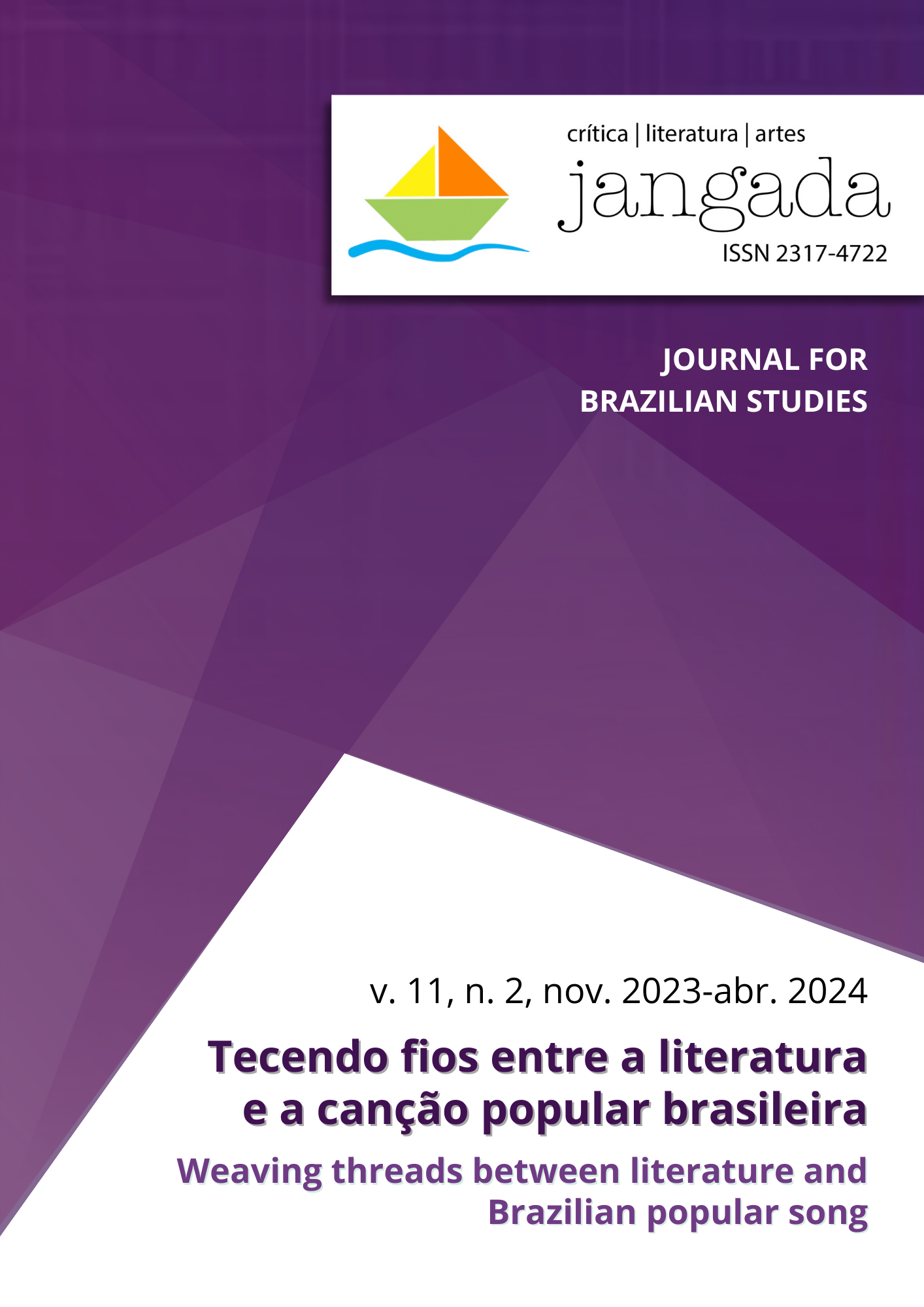"Todo mundo bole": samba, metalinguagem e autorreferenciação
DOI:
https://doi.org/10.35921/jangada.v11i2.596Keywords:
Brazilian popular song, Metalanguage, SambaAbstract
In this essay, we present the preliminary results of the ongoing research “Todo mundo bole – Samba and metalanguage: identity and cultural resistance”. Aware of the vast recurrence in samba lyrics of metalinguistic self-reference to this genre in the Brazilian popular songbook, particularly in Rio de Janeiro's urban samba (cf. LIMA, 2022), our investigation approaches the characteristic mark of metapoetry in occidental literary modernity, with its unsettling questioning about the poetic act itself, the samba artist’s exercise in reflecting, in his songs, on his own samba making. Referring to them as “metasambas”, we analyze the metalinguistic incidence in such lyrics as an exercise, sometimes in praising and affirming Brazilianness, sometimes in questioning their poetic nature, sometimes as a search for their Afro-diasporic identity and singularity. From a diachronic perspective, we follow the repeated presence of this aspect throughout the 20th century, from the origins of “maxixado samba” in the 1900s to contemporary times. For this work, we present the working methodology used, the bibliographical review on samba, modernity and metalanguage and a brief historical overview of the 20th century, highlighting the constant recurrence of metasambas in the social history of samba.
Downloads
References
ALENCAR, Edigar de. O carnaval carioca através da música. 2 vol. Rio de Janeiro: Editora Francisco Alves, 1979.
BENJAMIN, Walter. Charles Baudelaire: um lírico no auge do capitalismo. São Paulo: Brasiliense, 1991.
COMPAGNON, Antoine. Os cinco paradoxos da modernidade. Belo Horizonte: Editora UFMG, 1996.
CORREIA, Marlene de Castro. Drummond: a magia lúcida. Rio de Janeiro: Jorge Zahar, 2002.
FRANCESCHI, Humberto M. Samba de sambar do Estácio: 1928 a 1931. São Paulo: Instituto Moreira Salles, 2014.
HERMETO, Miriam. Canção popular brasileira e ensino de história: palavras, sons e tantos sentidos. Belo Horizonte: Autêntica, 2012.
HOUAISS, Antônio. Dicionário Eletrônico Houaiss da Língua Portuguesa. Rio de Janeiro: Objetiva; Instituto Antônio Houaiss, 2009.
LIMA, Luís Filipe de. Para ouvir o samba: um século de sons e ideias. Rio de Janeiro: Funarte, 2022.
LIMA, Luiz Costa. Mimemis e modernidade: formas das sombras. Rio de Janeiro: Editora Graal, 1980.
LOPES; Nei; SIMAS, Luiz Antonio. Dicionário da história social do samba. Rio de Janeiro: Record, 2015.
MOURA, Roberto. Tia Ciata e a Pequena África no Rio de Janeiro. Ed. Rev. e Amp. São Paulo: Todavia, 2022.
NAPOLITANO, Marcos. História e música: história cultural da música popular. Belo Horizonte: Autêntica, 2005.
SARAIVA, Daniel Lopes. Nara leão: trajetória, engajamento e movimentos musicais. São Paulo: Letra e Voz, 2018.
SCHWARCZ, Lilia M.; STARLING, Heloísa M. Brasil: uma biografia. São Paulo: Companhia das Letras, 2015.
SILVA, Wallace Lopes. Sambo, logo penso: afroperspectivas filosóficas para pensar o samba (Org.). Rio de Janeiro: Hexis; Fundação Biblioteca Nacional, 2015.
SODRÉ, Muniz. Samba: o dono do corpo. Rio de Janeiro: Mauad, 1998.
VELLOSO, Monica Pimenta. Modernismo no Rio de Janeiro: turunas e quixotes. Rio de Janeiro: Editora FGV, 1996.
VIANNA, Hermano. O mistério do samba. Rio de Janeiro: Jorge Zahar; Editora UFRJ, 1995.








